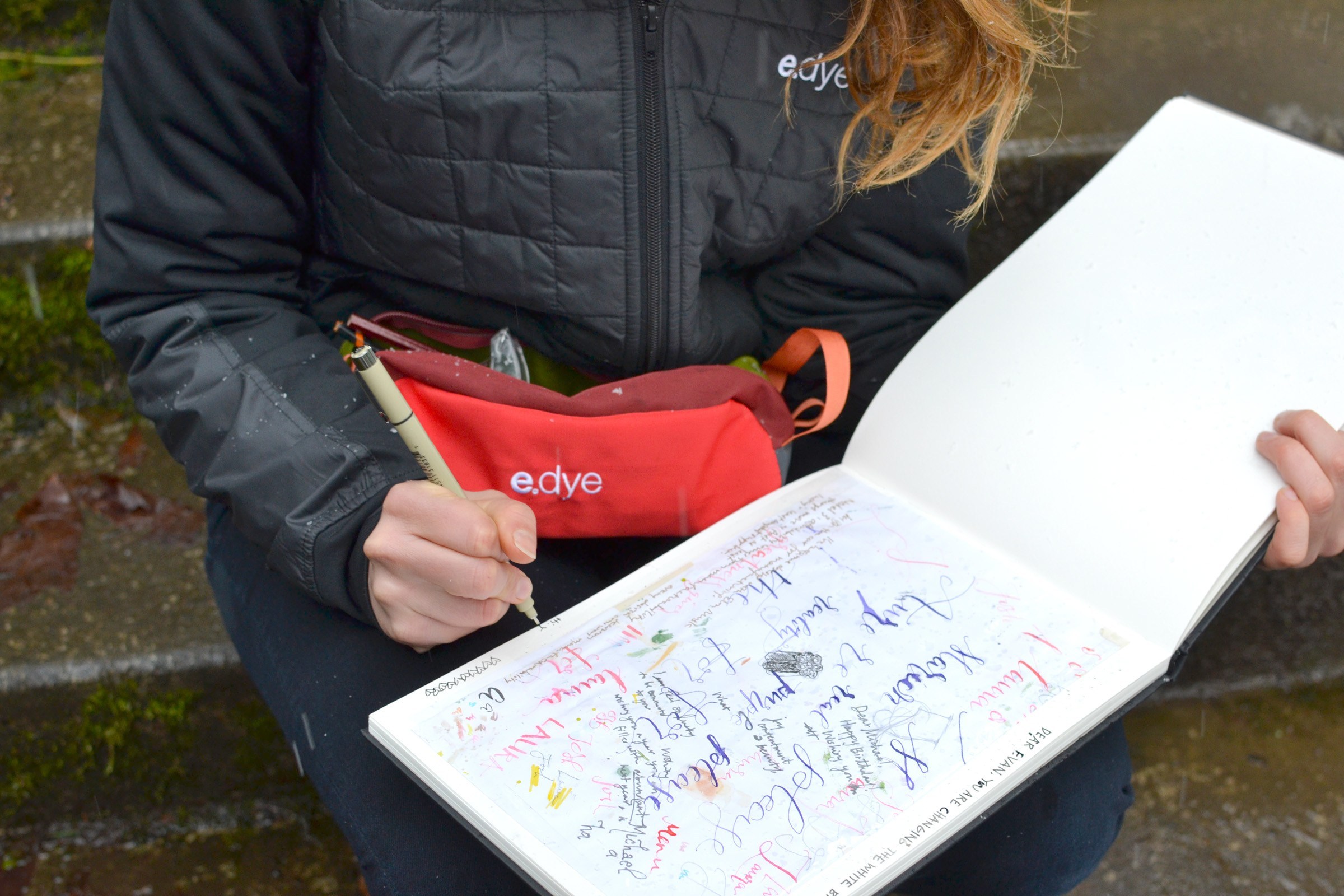

探索e.dye About Us
问题解答Frequently Asked Questions
e.dye®是什么?What is e.dye®?
e.dye®无水染色系统™为织物染色提供了一种永续发展的环保技术。有别于传统染色工艺,e.dye®染色技术不需要用水,在纱线汇出之前加入颜色,纱线由内而外上色。
e.dye® Waterless Color System™ offers an environmentally sustainable process for dyeing fabrics. Using the solution dyed polyester process, e.dye® requires no water to dye synthetics. By adding the color before the polymers are extruded, the color is inside the yarn, resulting in superior color performance.
e.dye®无水染色系统™是如何制成的?How is it made?
e.dye®的无水染色工艺,在纱线成型汇出前将颜色加入到纱线内部,再进行纺纱。跨越了传统染色流程的工艺限制,展现优异的色彩和色牢度表现。
e.dye® uses the proven solution dye process to put color directly inside polyester yarn filaments, before they are even spun into yarn. Previously, solution dyed polyester was limited by its color range, but e.dye® has expanded the color range, and made the process more efficient.
色牢度如何?What about colorfastness?
除了最重要的节水,e.dye®提供了更优良的成品。由于e.dye®的颜色在纱线内部,与颜色染在纱线外部的传统水染色工艺相比,e.dye®颜色是永久性的,不褪色、不溢色。
In addition to significant water savings, e.dye® delivers a superior finished product. Since the color is inside the yarn in contrast to outside the yarn with traditional water-dye process, e.dye® color is permanent. The colors won’t fade or bleed on to adjacent colors.
为什么传统的染色方法有危害?Why are traditional dye methods so harmful?
传统染色工艺源自于使用250年之久的染色流程。过程中使用水、化学品,进行混合加热,对织物进行染色。最初的染色工业过程,其实是为棉花和羊毛设计的,并不适合其他类型的纤维。是时候改变它了。
The damage caused by the current dye process comes from a 250 year old industrial process that uses water, chemicals and heat to dye fabrics. The existing industrial process was designed to color cotton and wool and never adapted to fit synthetic fibers. It’s time to change that.
e.dye®无水染色系统™是在哪里制造的?Where is it made?
e.dye®创新中心位于江苏省昆山市,目前已经创建了超过10,000种颜色配方。透过精准的染色公式,我们可以一次次地生产准确的颜色——从颜色核准,到初样、销样,从这一个大货订单到接下来每一个订单。
Located 90 minutes from Shanghai, the 160,000 square foot three-story e.dye® Innovation Center includes management offices, test lab and pilot factory. The e.dye® Innovation Center has created formulas for more than 5,000 vibrant colors. The Masterbatch colors are mathematically derived pigment and dyestuff formulas. We can produce the exact color time after time – from color approvals, to prototypes, through salesman samples and from one bulk order to the next.
色母粒是什么?What is Masterbatch?
色母粒是透过精准的方程式,所导出的颜料和染料配方。当您从我们的色卡本中选择一个e.dye®颜色时,这不只是一个想象中的目标,而是一个能完整呈现的精准颜色。您收到的成品,将是色卡上所看到的实际颜色。而这些颜色是能被重复使用的,颜色可以一次又一次地复制,这不是其他颜色系统可比拟的。伴随着我们的创新中心和试点工厂,我们有经过验证的工艺流程,以科学流程减少了各种色差发生的可能性。
The Masterbatch is mathematically derived pigment and dyestuff formulas. We can produce the exact color time after time – from color approvals, to prototypes, through salesman samples and from one bulk order to the next. When you select an e.dye® color from our color book, you are seeing the result of an industrial process that created this exact color – not an imaginary target. It’s the actual color you will see in the fabrics you make into products. They’re repeatable, they can be duplicated time after time. That’s not the case with any other color system. Other color systems aren’t tied to an industry process. With our Innovation Center and pilot factory we have a proven process. When it comes to color variability, we’ve scientifically reduced that possibility.
e.dye®如何影响制造时程表?How does e.dye® affect production timelines?
与传统工艺相比,e.dye®染色需要在正确的时间确定颜色。这是思维的转变,我们有技术支持来引导这个过程走向成功。我们正在合作的品牌,发现相较于传统染料工艺,我们缩短了3-5天的生产时间线。最大的优点是一旦颜色被设定,它就不会改变。用传统染色工艺,打色过程不仅耗时、昂贵,成果也经常令人失望。e.dye®无水染色系统™,可以显著地减少打色批准过程,并确保与设计者期望的颜色吻合,而不是用折衷的颜色方案。
Compared to traditional processes, e.dye® requires color decisions to be made at the right time: first. That’s a shift in thinking, and we have the technical support to shepherd this process to success. Brands we are working with have found that the timeline is within 3-5 days of traditional processes. The big advantage is that once the color is set it never changes. With traditional dye processes, the lab dipping process is always time-consuming, costly and the most disappointing part of the color development. The e.dye® Waterless Color System™ can dramatically reduce the lab dip approval process and assure superior color matching to the designers desired color – not a compromised color such as those available using conventional piece dye.
节约多少水?How much water is saved?
传统的染料工艺,最初是设计来染棉和羊毛织物的,通过将染料和化学物质混入高热的水中,与合成纤维织物混合染色。根据我们的研究,每码合成纤维织物染色,需要至少11公升的水,而几十年来,传统工业染色工艺一直维持着同样的制造过程。
For decades, traditional industrial dyeing processes have remained unchanged. Originally designed to dye cotton and wool, conventional dye processes use super-heated water mixed with dyestuffs and chemicals to infuse synthetic fibers with color. At least 22 liters of water are needed for each yard of dyed synthetic fabric, based on research we have available, upon request.
e.dye®对环境是否有其他影响?Are there any other environmental impacts of e.dye®?
除了节约用水,e.dye®的工艺使用更少的能源,减少二氧化碳排放,并限制了在传统生产过程中的化学品用量。基于RISE(瑞典研究院)的LCA(产品生命周期评价),e.dye®已建立了EPD(环境产品声明),以证明和验证对环境的效益。
In addition to water savings, e.dye®’s process requires less energy, reduces CO₂ emissions and limits the chemicals used in traditional production processes. e.dye® has established an environmental product declaration to document and verify the environmental benefits, based on an LCA conducted by Swerea.